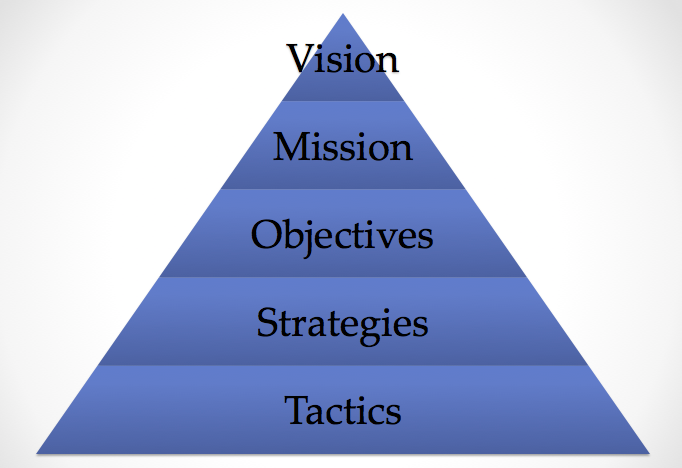
As a business professional, your attention may primarily be drawn to hard numbers and tangible outcomes, often overlooking the importance of "soft" aspects like values and culture. Nevertheless, it's worth noting that several global giants owe their immense success to their astute integration of culture into their organizational strategy. But why is aligning values with strategic goals so crucial for building a solid foundation for success? Deloitte's study reveals that companies actively promoting their core values witness a remarkable 12% higher growth in stock prices compared to those neglecting this crucial alignment. This article highlights the impact of integrating your values during the strategic planning process.
Why are values important for strategic planning?
When we talk about creating a strategic plan, the first part of the strategic planning process is determining where your organization is going, and how it's going to get there: your vision and mission.
Once you have defined your vision and mission, (your where and why) then you can start the action stuff that moves the strategy forward and helps you achieve your goals. Your organizational values are the glue that keeps it all together.
Once you know where your organization is going, why you do what you do, and you have established a strategic plan, you then need your people on board to move everything forward. It's easy to forget that there are people behind the charts and the numbers, and those people are driven by their own desires and purpose: Your staff has their own personal vision and mission, and getting them on board is crucial. Therefore, stakeholder engagement is vital to the process.
By engaging with stakeholders, including your staff, you can gain valuable insights and perspectives that can help you create a more effective plan.
Values alignment comes in two separate, but equally critical parts for high achievement:
- The values of the organization as an entity are aligned, understood, and respected across departments and teams.
- The values of the people within the organization are also aligned, understood, and respected.
Download our free Strategic Planning Template and start your strategic planning process today
You can iterate your values as part of your strategic plan and as part of your organization as a whole, but if they're just words on a wall instead of within the fabric of your organization, your strategic plan implementation may struggle.
You might also have a culture, however, if values are misaligned, it might not be the culture that you are going after.
Fostering culture across your organization through supporting aligned values is key.
If your organization and your people share the same values, you will:
- Follow the same rules
- Establish the same norms
- Develop mutual respect
- Have similar tolerances
- Share appreciation (from a purpose and destination standpoint)
- Have a framework to have critical conversations when someone is or isn't behaving in a way that aligns with core values
Related ContentWhat is the Strategic Planning Process?
How to Create Team Alignment and Why it's Critical in 2023
Values are important for strategic planning because if everyone demonstrates the same values, passion and purpose when they come to work, then they are going to be working toward the same goal, regardless of what the strategic plan is.
The hardest part of strategic planning is not figuring out what to do, it's aligning your team and then doing what needs to get done to achieve your goals. If you have values alignment early, your strategic plan will be implemented much easier.
If you ignore values alignment, you might still get your plan done, but it will likely cost more money, take more time, and cause more friction (Which means you'll lose good people, or won't be able to get them in the first place).
Get alignment with your values as part of your strategic planning process, and work with a dedicated strategy consultant to guide you towards fostering a culture that is in line with accomplishing your mission and your vision.
If you're looking for a strategic planning facilitator to help align your team and reach your vision, SME Strategy can help. Contact us today and be sure to check out our services



